Beginner’s Guide to RC Powered Gliders
Gliders or sailplanes are lightweight aircraft designed to fly without engines for lengthy periods. Few can resist an upward glance on a warm sunny day when one of these magnificent birds sails overhead. My guide reviews 6 RC powered gliders, preceded by a no-nonsense introduction. Keep reading if you’re new and would like to learn more about this fascinating hobby.
The next section starts by looking at the types of RC gliders available followed by other essential points. The reviews will be much easier for beginners to grasp after reading this overview.
| Budget |
|---|
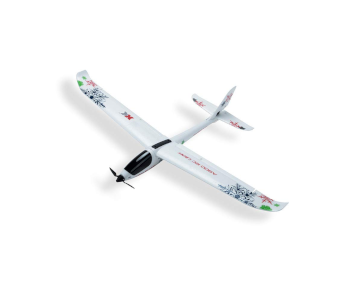 |
| WL XK-A800 Glider |
| 4.6/5.0 |
| Wingspan: 780mm |
| Material: EPO Foam |
| Beginner-friendly, stunt capable, durable build, decent battery life. |
| Check Amazon |
| Best Value |
|---|
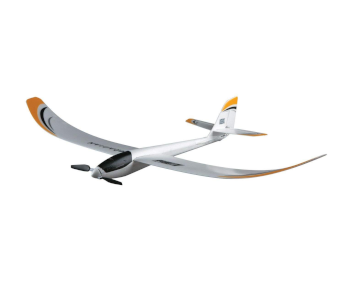 |
| E-flite U2980 UMX Radian |
| 4.5/5.0 |
| Wingspan: 730mm |
| Material: Molded Foam |
| Ultra-lightweight, easy to fly, suitable for outdoors/indoors. |
| Check Amazon |
| Top Pick |
|---|
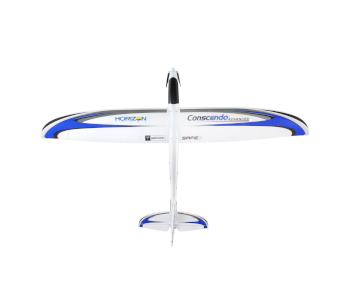 |
| ParkZone Conscendo Advanced |
| 4.9/5.0 |
| Wingspan: 1005mm |
| Material: EPO Foam |
| Sleek airframe, brushless power, AS3X, quick to assemble, easy to store. |
| Check Amazon |
Types of RC Gliders
RC gliders fall into many categories, just like other types of aircraft. The designs also vary a lot both in appearance and capability. Here’s a quick breakdown of what’s on offer:
- Sports gliders
- Hand launch gliders
- Discus launch gliders (DLGs)
- Thermal soarers
- Combat RC gliders
- Scale RC sailplanes
Sports gliders come in all shapes and sizes and are perfect for slope soaring and flat field flying fun. Hand launch sailplanes or chuckies are popular with beginners and the focus of this guide. Pilots simply throw the plane to get it airborne. Chuckies have small designs so that they’re easy to manage. The other types in the list are for intermediate and advanced users and not discussed on this page.
BNF, PNP, ARF, RTF Explained
Many RC sailplanes come with everything needed to fly in one box. Others require extra parts or components to complete. The latter are useful if you already have the extras, prefer to choose your own, or have more than one model. The buying options are BNF, PNP, ARF, and RTF.
Bind-N-Fly (BNF): Glider needs a transmitter (Tx)
Plug-N-Play (PNP): Glider needs a transmitter (Tx), receiver (Rx), battery + charger
Almost-Ready-to-Fly (ARF): Glider needs a transmitter and maybe some assembly
Ready-to-fly (RTF): The drone is ready to fly straight out of the box
Build and Materials
The build and materials of RC gliders are down to flying style, skill level, and preference. The size and materials also affect the weight of the model. You can find or build a kit plane using plastics, wood, and polymer foams. Lightweight sailplanes typically use EVA (ethylene-vinyl acetate) and EPP (expanded polypropylene) foam. Flying any type of RC glider is all about reading and responding to the wind.
How RC Gliders Work
A glider has 4 main parts, i.e., fuselage, main wing, vertical tail, and a stabilizer. RC sailplanes fly in much the same way as the real aircraft. The only difference is that they’re unmanned. The job of an RC pilot on the ground is to exploit the lifts produced by thermals and slopes.
There are 6 launch methods used to get RC model gliders airborne.
- Hand launching: ultra-lightweight with wingspans of 1500mm or less
- Discus launching: used for a specific type of glider
- Bungee or high-start launching: uses long elastic cord
- Aerotow: an RC plane tows the glider into the sky
- Winch launching: like bungee, but a powerful winch reels in the line
- Piggyback launching: hitches a ride on the back of RC powered craft
What method an RC glider pilot uses depends on several factors. They include things like the type of aircraft, flying style, and the location. Most novice-friendly gliders are the hand-launch variety.
Novice Glider Characteristics
Total newbies may want to start with a lightweight chuckie. Those who want something bigger can look for a glider that has high wings. It should also have a semi-symmetrical or flat wing section. Try not to buy something based only on appearance and cost. An entry-level model should be hard to break and easy to repair. Elapor foam is an excellent material that can withstand plenty of learner crashes.
Consider an ultra-lightweight model that can fly slow and is not too agile. Models like these won’t challenge experienced pilots, but they’re ideal for newbies.
About My ‘RC Powered Glider’ Guide
The models reviewed on this page are all simple designs and fun to learn. These 6 gliders are the result of personal thoughts and the opinions of industry experts. I also took the feedback of real users into consideration during the selection process. The first 3 reviews are the Best Budget pick, followed by Best Value, then the Top Choice. The table below shows the aircraft as they appear on the page.
RC Powered Gliders Comparison Table
| Make and Model | Wingspan | Material | Price |
|---|---|---|---|
| WL XK-A800 EPO Glider W/ 5CH | 780mm | EPO Foam | Check Price |
| E-flite U2980 UMX Radian BNF RC Sailplane | 730mm | Molded Foam | Check Price |
| ParkZone Conscendo Advanced BNF Basic Glider | 1005mm | EPO Foam | Check Price |
| Leoie XK A800 780mm RC Sailplane | 780mm | EPO Foam | Check Price |
| VOLANTEXRC RC RTF Sailplane | 600mm | EPP Foam | Check Price |
| E-flite 2.6M Radian XL BNF Basic RC Glider | 2600mm | Z-Foam | Check Price |
1. WL XK-A800 EPO 5CH RC Glider | Best Budget
Editor’s Rating: 4.6/5
The Best Budget pick goes to an RC glider called WL XK-A800. It’s a smallish, lightweight model with a wingspan of just 780mm. It’s possible to fly this puppy indoors as well as outside.
- Best feature 1: Modularized design, easy to carry
- Best feature 2: 3D/6G switchable system
- Plus points: Beginner-friendly, stunt capable, durable build, decent battery life, fast charging
- Minus points: A tad underpowered
WL XK-A800 Glider Feature Highlights
The modular design makes the WL XK-A800 easy to store, repair, and carry. The 3D mode lets pilots perform impressive stunts like somersaults, inverted flights, and rolls, etc. Learners can fly a more relaxed style using the sailplane’s 6G flight stabilization. Switching between the two modes takes a nanosecond. The size and durable EPO foam make the WL XK-A800 resistant to moderate crashes.
The flight time on a single charge is around 20 minutes. The charging time is also impressive and takes only 40 minutes to revitalize a flat battery.
The Not So Good
The only real criticism with the WL XK-A800 Glider is that the engine’s a tad underpowered. It feels weak, and it’s not brushless, but that also helps to keep the price down. It does the job, though. It’s just that the weak engine is sure to frustrate more experienced pilots.
| Tech Specs |
|---|
| Model: RC training glider |
| Recommended age: 8+ years |
| Wingspan: 780mm (30.7”) |
| Flying Weight: 3.8 0z. (110g) |
| Material: Durable EPO |
| Launch Mechanism: Hand |
| Battery: 7.4V 500mAh |
| Max Flight Time: 20 minutes |
| Max Charging Time: 40 minutes |
| Radio System: 2.4GHz Controller |
| The Pros |
|---|
| Modularized design |
| Easy to carry |
| Durable build |
| 3D/6G switchable system |
| Beginner-friendly |
| Stunt capable |
| Decent battery life |
| The Cons |
|---|
| Tad underpowered |
2. E-flite U2980 UMX Radian BNF Sailplane | Best Value
Editor’s Rating: 4.5/5
Meet the E-flite U2980 UMX Radian. It’s a good-looking bind-n-fly (BNF) bird, and it makes our Best Value pick. It’s a powerful little sailplane that’s a joy to fly once you get the hang of it.
- Best feature 1: Contoured spinner w/ folding propeller
- Best feature 2: 3 channel (CH) control
- Plus points: Ultra-lightweight, easy to fly, removable wing, suitable for outdoors/indoors
- Minus points: BNF, some assembly, short battery life
E-flite U2980 UMX Radian Feature Highlights
This ultra-lightweight glider is an excellent beginner sailplane. It’s a smaller version of the famous and much larger, ParkZone Radian. The model has a contoured spinner with a folding propeller to enhance its glide efficiency. Radian’s 3CH controller and curved wing provide flying simplicity with breathtaking lifts. The one-piece wing is quick to remove, which makes the bird easy to store and to carry.
The smallish size and straightforward handling characteristics let you can fly indoors or outside. Indoors means a spacious area, and not inside the home, unless you live in a mansion.
Items needed to complete include:
- compatible 4CH+ DSM2/DSMX transmitter
The Not So Good
This is a bind-n-fly (BNF) sailplane, and so it needs a transmitter to complete. That’s also a pro if you already have a compatible 4+ channel DSM2 or DSMX transmitter. The glider also requires some assembly that takes around an hour or just over. The battery life is 8–10 minutes at best. That’s quite typical for an RC glider in this class but still disappointing.
| Tech Specs |
|---|
| Model: UMX Radian |
| Recommended age: 14+ years |
| Wingspan: 730mm (28.7”) |
| Flying Weight: 1.50 oz. (43g) |
| Material: Molded-foam |
| Launch Mechanism: Hand |
| Battery: 1S 3.7V 150mAh 25C LiPo |
| Max Flight Time: 8 minutes |
| Max Charging Time: 30+ minutes |
| Radio System: 4CH+ DSM2/DSMX compatible Tx (not included) |
| The Pros |
|---|
| Contoured spinner w/ folding prop |
| Small scale design |
| 3 channel (CH) control |
| Curved wing for enhanced gliding |
| Easy to fly |
| Ultra-lightweight |
| One-piece, Removable wing |
| Suitable for outdoors/indoors |
| The Cons |
|---|
| Needs a transmitter (BNF) |
| Needs assembly |
| Short battery life |
3. Conscendo Advanced BNF Basic Sailplane | Top Pick
Editor’s Rating: 4.9/5
ParkZone’s Conscendo Advanced takes the Top Pick slot. It’s a BNF Basic glider with a 1.5-meter wingspan. This sleek acrobatic performer is ideal for advanced beginners and above.
- Best feature 1: Optional SAFE Select flight mode
- Best feature 2: Sporty aerobatic performance
- Plus points: Sleek airframe, brushless power, AS3X, quick to assemble, easy to store
- Minus points: Thin fuselage, BNF
Conscendo Advanced Glider Feature Highlights
The Conscendo Advanced is a capable sports glider with a sleek airframe and a brushless power system. Assembly and disassembly are quick and easy thanks to the plug-in wings. That also makes it convenient to store and transport. This easygoing bird is ideal for anyone with a little experience.
The Optional SAFE Select flight mode gives new users a margin of safety. SAFE Select features include pitch and bank angle limits and automatic self-leveling. Or, pilots can enjoy the thrill of sporty aerobatic performance with SAFE Select disabled. AS3X 3-axis artificial stabilization technology works quietly behind the scenes. AS3X does an excellent job of smoothing out wind and turbulence effects.
Items needed to complete include:
- Full-range, 5CH+ DSMX®/DSM2® Transmitter
- LiPo Flight Battery 11.1V 1250–1350mAh 3S 20C
- LiPo Charger 3S compatible
The Not So Good
The fuselage on this plane seems incredibly thin and vulnerable. I haven’t come across any shared complaints about it damaging easily, but it feels weak. This is a bind-n-fly (BNF) version which can also be a pro if you have the parts needed to complete the kit. You must buy a transmitter, battery, and suitable charger if not (see above for details).
| Tech Specs |
|---|
| Model: Conscendo Advanced BNF |
| Recommended age: 14+ years |
| Wingspan: 1005mm (39.6”) |
| Flying Weight: 22.9 oz. (650g) |
| Material: EPO |
| Launch Mechanism: Xxx |
| Battery: 1250–1350mAh 3S 11.1V 20C LiPo (not included) |
| Max Flight Time: 10 minutes |
| Max Charging Time: Depends on battery and charger (not included) |
| Radio System: 5CH+ DSMX®/DSM2® Transmitter (not included) |
| The Pros |
|---|
| Optional SAFE Select flight mode |
| AS3X technology |
| Sleek airframe |
| Folding propeller |
| Sporty aerobatic performer |
| Ideal for advanced beginners |
| Quick to assemble |
| Easy to store |
| The Cons |
|---|
| Brushless power system |
| Thin fuselage |
| Bind-n-Fly (also a pro) |
4. Leoie XK A800 780mm RC Sailplane
Editor’s Rating: 4.2/5
The Leoie XK A800 is an affordable RC Sailplane with a 780mm wingspan. The model comes with a big and small rudder volume setting. Skilled pilots can switch to the larger rudder for acrobatic fun.
- Best feature 1: 3D6G stabilization system
- Best feature 2: Detachable wing structure
- Plus points: Affordable, quick assembly, aerobatic capable, decent flight time, fast charging
- Minus points: Not ideal for raw beginners, nose heavy, average durability
Leoie XK A800 Feature Highlights
The glider has a convenient detachable wing structure for quick assembly and easy transport. Its main highlight is the 1-key switch 3D6G stabilization system. You can perform several exciting stunts in 3D mode that uses a 3-axis gyro. The 6G mode exploits a 6-axis gyro that makes the glider ultra-stable and ideal for advanced-beginners.
Flight time on a single charge is around 20 minutes or slightly more. The fast 40 minute charging adds further to the value of this XK A800 780mm sailplane.
The Not So Good
The Leoie XK A800 780mm RC Sailplane provides excellent value for money, but it’s not for everyone. It’s too small, fast, and agile for the raw beginner despite its 6G stabilization. Skilled pilots love it for the same reasons, though. The glider tends to be a little nose heavy too. Its EPO foam construction provides average durability at best. That’s another reason it’s not ideal for novice fliers.
| Tech Specs |
|---|
| Model: Leoie XK A800 |
| Recommended age: 14+ years |
| Wingspan: 780mm (30.7”) |
| Flying Weight: 3.8 oz. (110g) |
| Material: EPO |
| Launch Mechanism: Hand |
| Battery: 7.4V 300mAh |
| Max Flight Time: 20 minutes |
| Max Charging Time: 40 minutes |
| Radio System: 2.4Ghz controller |
| The Pros |
|---|
| Affordable, low cost sailplane |
| 3D6G stabilization system |
| Fast and agile |
| Detachable wing structure |
| Quick assembly time |
| Aerobatic capable |
| Decent flight time |
| Fast charging |
| The Cons |
|---|
| Nose heavy |
| Average durability |
| Not suitable for raw beginners |
5. VOLANTEX Ranger600 RC RTR RC Sailplane
Editor’s Rating: 4.3/5
VOLANTEXRC is a well-known brand in the world of RC. This model is its Ranger600; a ready-to-fly (RTF) glider with 6-axis gyro stabilization. It’s an excellent choice for first-time glider pilots.
- Best feature 1: 6-axis gyro stabilization system
- Best feature 2: 3 level flight control
- Plus points: Ready to fly (RTF), backward pusher, durable, 1-key return, long flight time
- Minus points: Hard to access motor, poor paint job, long charging time
VOLANTEX Ranger600 Feature Highlights
VOLANTEX’s Ranger600 has an integrated 6-axis gyro. Its ultra- steady self-stabilization arrangement makes it an attractive choice for beginners, but that’s not all. The 3-level flight assist feature helps new pilots to progress in stages. The Beginner Level has full assist. There’s partial assist for intermediate fliers, and full manual control at the Expert Level.
This model uses a backward pusher arrangement which has two benefits. One is that it enables the plane to glide slowly like a bird of prey soaring on thermals. The other advantage is that it’s more protective toward the flight propeller in the event of a crash. And it’s good to know the special EPP foam material is there to protect the model if it does crash. EPP is ultralight, durable, and flexible.
The One Key Return is a welcome function not usually found on RC sailplanes. The reasonable 20 minute flight time is also worth mention. The battery charging time is less impressive (see below).
The Not So Good
The designers of this glider have wired the motor into the main controller. That makes it impossible to service without cutting the wings out of the fuselage. It’s doable, and the wings will glue back on, but what a palaver. Another gripe is that the paint on this model comes off way too easily. Finally, the charging time is around 2 hours, so most pilots will want at least one extra battery.
| Tech Specs |
|---|
| Model: Volantex RC Ranger 600 |
| Recommended age: 14+ years |
| Wingspan: 600mm (23.6”) |
| Flying Weight: 2.4 oz. (70g) |
| Material: EPP Foam |
| Launch Mechanism: Hand |
| Battery: 3.7V 360mah Li-Po |
| Max Flight Time: 20 minutes |
| Max Charging Time: 2 hours |
| Radio System: 2.4G 3CH |
| The Pros |
|---|
| 6-axis gyro stabilization system |
| 3 level flight control |
| Ready to fly (RTF) |
| Durable, flexible EPO |
| Backward pusher design |
| 1-key return |
| Long flight time |
| The Cons |
|---|
| Hard to access motor |
| Poor paint job |
| Long charging time |
6. E-flite 2.6M Radian XL BNF Basic RC Glider
Editor’s Rating: 4.4/5
Big gliders can be daunting for new pilots, but this bird is easy to handle even at the entry-level. The model has a 2.6M polyhedral wing with fully-proportional lift spoilers.
- Best feature 1: Big glider, easy to fly
- Best feature 2: Horizontal stabilizer
- Plus points: AS3X technology, brushless motor, transportable/storable, Z-foam
- Minus points: Needs better reinforcement, BNF
E-flite 2.6M Radian Feature Highlights
E-flite’s Radian is the biggest bird here, but don’t let the size intimidate you. It only takes a few minutes to assemble and disassemble making it easy to store and carry. The craft combines a lightweight Z-Foam construction with brushless power. Its power-to-weight ratio is spot on.
This beautiful sailplane is known for its pilot-friendly flight characteristics. Even novice users can learn how to ride thermals in no time. The plane’s flying horizontal stabilizer provides an effective pitch response irrespective of speed. AS3X technology also adds to the stable flight experience. It keeps the glider smooth and responsive even in higher winds.
Items needed to complete include:
- 5CH+ Spektrum™ DSMX®/DSM2® transmitter
- Flight battery, 3S 3200mAh LiPo w/ EC3™ connector
- Suitable charger
The Not So Good
E-flite’s 2.6M Radian XL is a big beautiful bird which is also a negative. Its foam construction and large size could use better reinforcement. I doubt the foam body will cause any issues if pilots respect the glider’s limitations. However, expect things to break if you fly outside its flight envelope. It’s a BNF model, so it needs a transmitter, flight battery, and charger to complete. BNF is also a pro for some.
| Tech Specs |
|---|
| Model: Radian XL 2.6m |
| Recommended age: 14+ years |
| Wingspan: 2600mm (102.40) |
| Flying Weight: 79.5 oz. (2254g) |
| Material: Z-Foam |
| Launch Mechanism: Hand |
| Battery: 3200mAh 3S LiPo (not included) |
| Max Charging Time: Depends on the charger |
| Radio System: 5+ CH Spektrum DSMX / DSM2 transmitter (not included) |
| The Pros |
|---|
| Big glider, easy to fly |
| Horizontal stabilizer |
| AS3X technology |
| Brushless motor |
| Transportable |
| Easy to store |
| Durable Z-foam |
| The Cons |
|---|
| Needs better reinforcement due to its large size |
| Bind-n-Fly (also a pro). |
Contents
- Types of RC Gliders
- BNF, PNP, ARF, RTF Explained
- Build and Materials
- How RC Gliders Work
- Novice Glider Characteristics
- About My ‘RC Powered Glider’ Guide
- RC Powered Gliders Comparison Table
- 1. WL XK-A800 EPO 5CH RC Glider | Best Budget
- WL XK-A800 Glider Feature Highlights
- The Not So Good
- 2. E-flite U2980 UMX Radian BNF Sailplane | Best Value
- E-flite U2980 UMX Radian Feature Highlights
- The Not So Good
- 3. Conscendo Advanced BNF Basic Sailplane | Top Pick
- Conscendo Advanced Glider Feature Highlights
- The Not So Good
- 4. Leoie XK A800 780mm RC Sailplane
- Leoie XK A800 Feature Highlights
- The Not So Good
- 5. VOLANTEX Ranger600 RC RTR RC Sailplane
- VOLANTEX Ranger600 Feature Highlights
- The Not So Good
- 6. E-flite 2.6M Radian XL BNF Basic RC Glider
- E-flite 2.6M Radian Feature Highlights
- The Not So Good

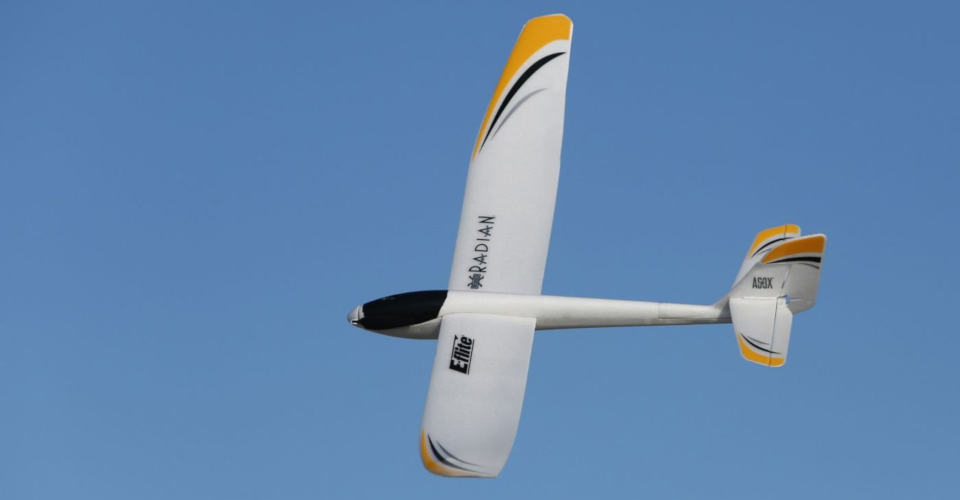
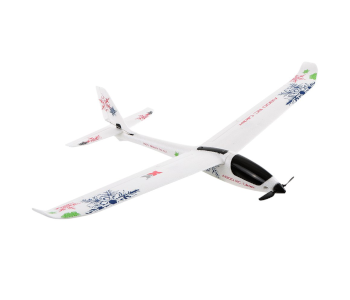
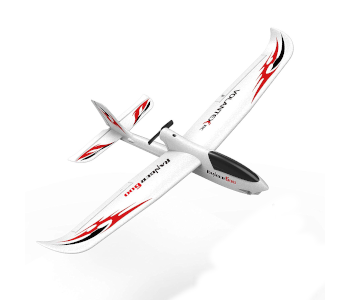
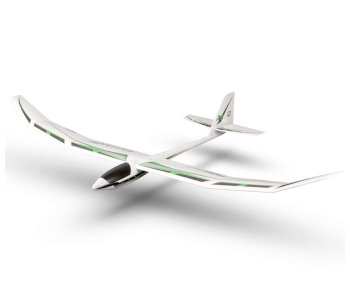
Suggest you add the rtf OMPHOBBY T720 to your powered glider review. its a very stable 4 channel model for a beginner. It has crash resistant main wing and stabiliser attachments that allow the wings to be clipped into place with ease plus has a brushless motor. Also goes into a failsafe (motor turns off) and auto leveling spiral should TX signal fail.
Switch into normal flight, up the speed and it becomes a very able model. If things get a little hairy, flip switch into stabilised mode and let go of the sticks and it self levels.